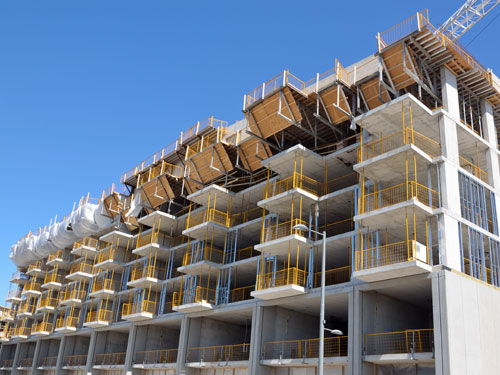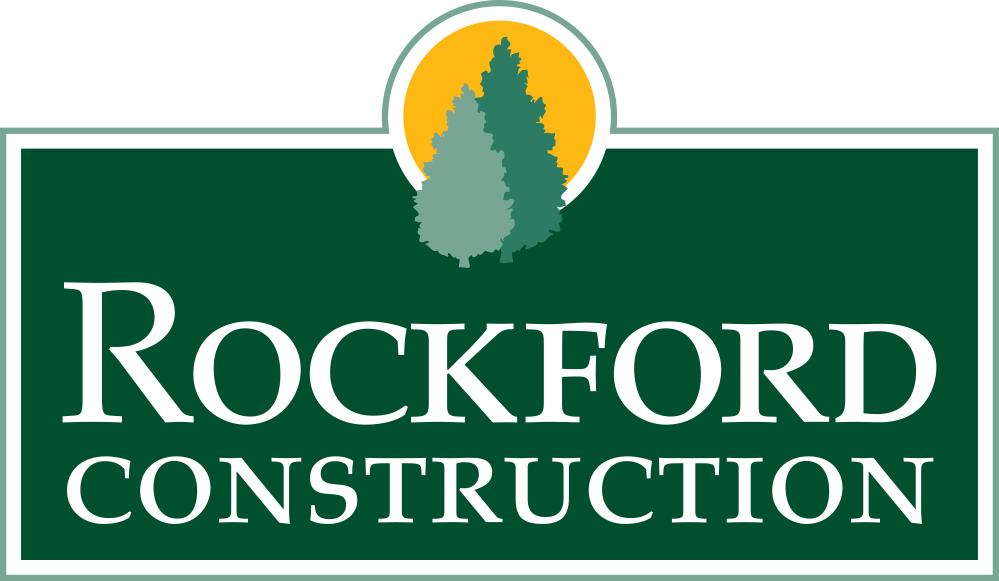
How to Determine the Best Location for Townhouse Construction
Choosing the right location for townhouse construction is crucial for the success and sustainability of the project.
In this blog, we will help you determine the best ways to select a location for townhouse construction, including market trends, demographic needs, zoning regulations, and environmental considerations.
So, let’s dive in and discover the keys to success in choosing the perfect site for your next townhouse project.
Factors to Consider When Determining the Best Location
When determining the best location for townhouse construction, it’s important to consider the many factors that can impact the success or failure of your project. These include land availability and cost, the proximity to essential amenities such as schools, healthcare facilities, and transportation hubs, the local regulations and zoning requirements, the existing infrastructure for utilities like water, electricity, and waste disposal, and the target market’s preferences and needs.
Moreover, evaluating potential environmental impacts, such as flood risks or air pollution levels, is crucial. Considering these factors will ensure a sustainable and profitable development that meets current and future housing needs while preserving the new residents’ quality of life.
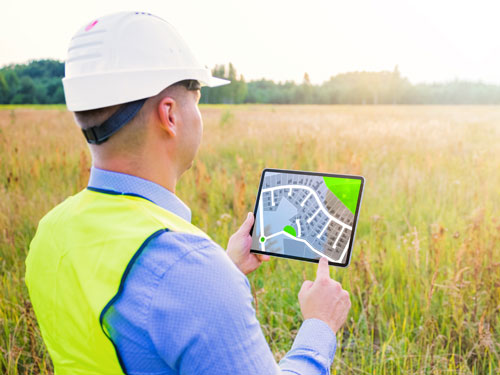

Understanding the Target Market
First on the list of items for consideration is understanding your target market. The preferences and needs of potential buyers or renters will define the success and profitability of your real estate investment nearly as much as the building site itself.
Analyzing factors such as proximity to amenities, accessibility, affordability, and safety can help identify areas with high demand for townhouses, ultimately leading to increased attractiveness and desirability among potential customers.
Creating targeted marketing campaigns based on this understanding can lead to better results by driving interest from more qualified leads ready to invest in a townhouse property or lease it long-term.
Identifying the Demographic Profile of Potential Buyers
Age Group
Understanding the demographic profile of potential townhouse buyers or renters by age group is crucial for a townhouse when contemplating a new construction neighborhood. Such information helps builders design the right accommodations for their target market, ultimately leading to more successful and profitable developments.
There are several ways of gathering information on the demographic profile of potential buyers or renters, including surveys, focus groups, or statistical data analysis. Consulting with real estate agents experienced in dealing with townhouse buyers and renters can also provide valuable insights.

Income level
Identifying the income level of your target audience is also an essential factor in charting your success. By understanding the income levels of potential buyers or renters, developers can adjust their amenities, pricing strategies, and even architectural designs accordingly.
To identify the demographic profile by income level, developers should conduct thorough market research on similar projects within their target area. This can include gathering data from online resources, government reports, and local real estate agents.
Mapping out this data enables developers to accurately pinpoint suitable locations for their townhouse construction projects while maximizing appeal to potential townhouse buyers or renters within their target demographic.
Family Size
Family size is of utmost importance for townhouse developers. For instance, larger families may require more space, extra bedrooms, and spacious outdoor areas, while smaller families or singles might focus more on proximity to amenities or public transportation.
You can gather vital information by consulting census data for population demographics in specific regions, local real estate agents with insights into their client’s preferences, and conducting surveys and focus groups with potential target audiences to gather firsthand data.
By taking these steps, townhouse developers will be better positioned to choose a location that meets the needs of their desired residents.
Proximity to Amenities and Facilities
When townhouses are close to amenities such as grocery stores, schools, parks, and public transportation, residents can easily access essential services that enhance their quality of life. In addition to providing convenience for potential homeowners, being close to essential amenities increases property values and results in faster sales rates for developers.
Furthermore, a well-placed townhouse development can create community among its residents. People living close to shared facilities are more likely to interact with their neighbors, forging strong bonds and fostering a sense of belonging that contributes to a positive living environment.
Accessibility to Transportation
One of the most crucial factors for townhouse developers to consider when determining the best location for construction is proximity to transportation and accessible commuting routes. This is important for several reasons, with the key aspect being that potential buyers and renters are increasingly prioritizing ease of travel when selecting their next living space.
As cities become more congested and life becomes busier, people want to minimize their commuting time and maximize the time they can spend on more fulfilling activities. A location with close access to public transportation and major highways can be a significant selling point, making those townhouses more desirable and valuable.
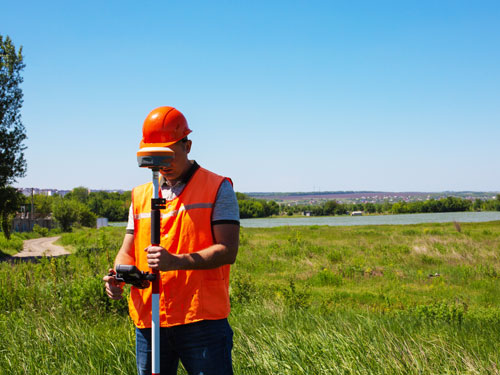
Evaluating Land Availability and Costs
Before selecting a location and starting the home-building process, carefully evaluate land availability and costs. Land availability determines whether ample space exists for the desired scope and size of the development, ensuring it meets community needs and accommodates potential growth.
Land costs also play a crucial role in determining the overall project budget, influencing elements such as construction expenses and ultimately affecting profitability.
Zoning Regulations
Zoning regulations play a significant role in determining where a townhouse development can be built. These regulations set the rules regarding how property may be used within a specified jurisdiction, guiding developers to possible building sites for their projects.
To adhere to these legal zoning requirements, reviewing zoning maps and consulting with local planning officers or city councils is essential.
After understanding zoning regulations in a specific area, it is crucial to consider the size and shape of potential land parcels. Look for parcels that provide sufficient space and square footage for building multiple units and common areas as needed.
Land Size and Shape
Land size, shape, and slope are also important as they can impact any number of architectural, design, landscaping, and engineering challenges you may face, including floor plan styles, setback requirements, retaining walls, walkways, drainage, runoff, size, or even availability of parking facilities, basements, walkways, and more.
Irregularly shaped lots are considered less desirable due to possible layout challenges and potential restrictions on buildable areas. It is advantageous to seek out rectangular or square-shaped parcels that allow for more efficient use of space and provide a more cost-effective construction process.
Furthermore, due diligence must include completing required surveys and studies before moving forward with townhouse construction plans.
Infrastructure and Accessibility
The suitability of a site for constructing a townhouse is heavily influenced by its accessibility to essential infrastructure and services such as clean water, efficient sewer systems, and utilities.
Availability of Water and Sewerage Systems
Access to clean water and efficient sewer systems is crucial for any residential development. When assessing a potential site for townhouse construction, the nearby water supply must be sufficient to support the community’s needs, and wastewater must be disposed of effectively to prevent health risks or environmental damage.
Inadequate water and sewer systems can lead to various problems for residents, such as water shortages or sewage backups. Therefore, ensuring easy access to these services is paramount when selecting a location.

Electricity and Other Utilities
Electricity plays an essential role in powering modern household amenities and appliances. A site with nearby power lines or electrical substations makes it easier to distribute reliable power throughout the townhouse complex.
An unreliable or overloaded electrical supply can adversely affect residents’ quality of life by causing frequent power outages and insufficient energy supply for daily needs. As such, developers should prioritize sites with readily accessible electrical infrastructure. Also, look into utility easements that allow developers to access utility lines for future expansion.
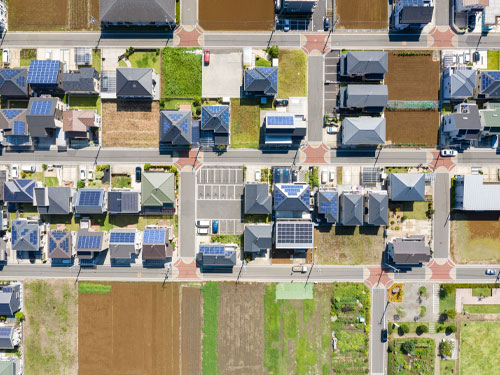
Changing Demographics Over Time
Another important aspect to analyze is the changes in demographics over time. A neighborhood that has experienced a positive shift in its population, with an influx of young professionals or families moving in, is a good indicator of its attractiveness for townhouse construction. Such demographics typically have the means and desire to invest in new housing options, creating a demand for townhomes that developers can capitalize on.
Are you looking to develop a new construction neighborhood?
When deciding where to build your next townhouse development, there’s much to consider. From identifying your target market to understanding the unique zoning requirements for your area, the process can be overwhelming. Fortunately, the experts at Rockford Construction can help you navigate the process and make sure that your development is a success. Contact us today to learn more about our services and how we can help you create a thriving townhouse neighborhood.
